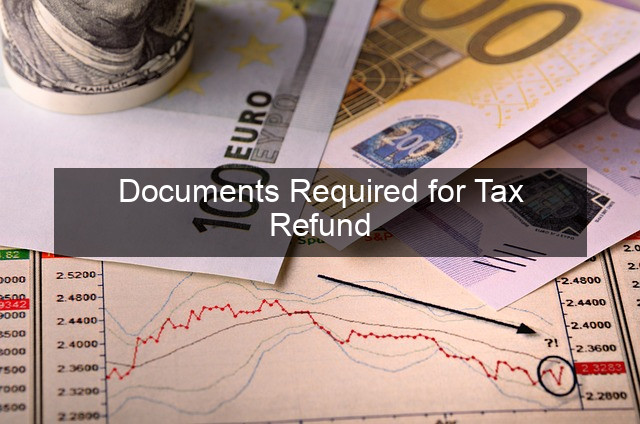Documents Required for Tax Refund
- Documents Required for Tax Refund
- Navigating the Tax Refund Maze: Essential Documents You'll Need
- Income Documentation: The Foundation of Your Refund
- W-2 Forms: Reporting Wages and Withholding
- 1099 Forms: Reporting Non-Employee Income
- Other Income Documentation: A Comprehensive View
- Deductions and Credits: Maximizing Your Refund
- Itemized Deductions: Potentially Lowering Your Taxable Income
- Tax Credits: Directly Reducing Your Tax Liability
- Supporting Documentation for Deductions and Credits
- Other Essential Documents: Completing the Puzzle
- Personal Identification: Confirming Your Identity
- Prior Year Tax Return: A Helpful Reference
- Bank Account Information for Direct Deposit: Faster Refunds
- Special Circumstances: Additional Documentation Requirements
- Self-Employment: Schedule C and Supporting Records
- Investment Income: Schedule D and Supporting Brokerage Statements
- Rental Income: Schedule E and Supporting Records
- Conclusion: Organized Documentation for a Smooth Tax Season

Navigating the Tax Refund Maze: Essential Documents You’ll Need
Tax season can be a daunting time, filled with forms, deadlines, and the ever-present fear of making a mistake. But amidst the complexities, there’s a shining light: the potential for a tax refund. Receiving that check (or direct deposit) can feel like a financial windfall, a reward for diligently navigating the tax system. However, securing your rightful refund requires more than just hoping for the best. It demands preparation and organization, especially when it comes to gathering the necessary documentation. Understanding what documents are required for a tax refund is crucial for a smooth and successful filing process. This comprehensive guide will walk you through the essential paperwork, ensuring you’re well-equipped to claim what’s rightfully yours. From W-2s and 1099s to receipts and more specialized forms, we’ll cover everything you need to know to maximize your refund and minimize the headache of tax season.
Income Documentation: The Foundation of Your Refund
W-2 Forms: Reporting Wages and Withholding
The W-2 form is the cornerstone of your tax return if you’re an employee. This document, provided by your employer, details your annual wages and the amount of taxes withheld from your paycheck. Ensure you receive a W-2 from each employer you worked for during the tax year.
Carefully review your W-2 for accuracy, paying close attention to your Social Security number, name, and income figures. Any discrepancies should be immediately addressed with your employer to avoid delays in processing your refund.
Keep your W-2s in a safe place, as you’ll need this information to accurately complete your tax return and claim your tax refund. Consider making digital copies for backup.
1099 Forms: Reporting Non-Employee Income
If you’re an independent contractor, freelancer, or receive non-employee compensation, you’ll likely receive a 1099 form. There are various types of 1099s, such as 1099-NEC for non-employee compensation and 1099-DIV for dividends. Each form reports specific types of income.
Similar to W-2s, accuracy is paramount with 1099 forms. Double-check the information provided and contact the payer if you find any errors. These forms are essential for accurately reporting your income and claiming your tax refund.
Organize your 1099s by type and keep them readily available when preparing your tax return. This will streamline the process and ensure you don’t overlook any crucial income sources.
Other Income Documentation: A Comprehensive View
Beyond W-2s and 1099s, other income sources may require specific documentation. Interest income is reported on 1099-INT forms, while unemployment compensation is reported on 1099-G forms. Be sure to gather all relevant income documentation to accurately reflect your financial situation.
If you received income from sources not covered by standard forms, maintain detailed records. Bank statements, payment receipts, and invoices can serve as valuable proof of income.
A comprehensive view of your income is essential for calculating your tax refund accurately. Missing or misreported income can lead to delays or even penalties.
Deductions and Credits: Maximizing Your Refund
Itemized Deductions: Potentially Lowering Your Taxable Income
Itemized deductions allow you to subtract certain expenses from your income, potentially lowering your taxable income and increasing your tax refund. These deductions can include medical expenses, state and local taxes, charitable contributions, and mortgage interest.
Maintain meticulous records of all expenses related to itemized deductions. Receipts, bank statements, and canceled checks are crucial for substantiating your claims.
Understanding which deductions you qualify for can significantly impact your tax refund. Consult the IRS guidelines or a tax professional to ensure you’re maximizing your deductions.
Tax Credits: Directly Reducing Your Tax Liability
Tax credits directly reduce the amount of tax you owe, offering a dollar-for-dollar reduction in your tax liability. Examples include the Earned Income Tax Credit, Child Tax Credit, and Education Credits. These credits can significantly boost your tax refund.
Eligibility requirements for tax credits vary, so carefully review the IRS guidelines to determine which credits you qualify for. Gather the necessary documentation to support your claim.
Claiming eligible tax credits can significantly increase your tax refund. Don’t overlook these valuable opportunities to reduce your tax burden.
Supporting Documentation for Deductions and Credits
To claim deductions and credits, you’ll need supporting documentation. This may include receipts for charitable contributions, medical bills, tuition statements, and other relevant paperwork. Organize these documents by category for easy access.
Ensure your documentation is clear, legible, and provides sufficient detail to support your claims. Incomplete or unclear documentation can lead to delays or rejection of your deductions and credits.
Proper documentation is essential for claiming deductions and credits and maximizing your tax refund. Take the time to organize and maintain accurate records.
Other Essential Documents: Completing the Puzzle
Personal Identification: Confirming Your Identity
You’ll need to provide your Social Security number and date of birth to verify your identity. Ensure this information is accurate and matches your official records.
For married couples filing jointly, both spouses must provide their Social Security numbers and dates of birth.
Accurate personal identification is essential for processing your tax refund without delays.
Prior Year Tax Return: A Helpful Reference
Having a copy of your prior year tax return can be a valuable resource. It can help you identify deductions and credits you claimed previously and ensure consistency in your filings.
Your prior year return can also serve as a guide for completing the current year’s return.
While not always required, having your prior year return handy can streamline the filing process and help you avoid errors.
Bank Account Information for Direct Deposit: Faster Refunds
If you choose to receive your tax refund via direct deposit, you’ll need to provide your bank account number and routing number. This is generally the fastest and safest way to receive your refund.
Double-check your bank account information to avoid delays or misdirected funds.
Direct deposit eliminates the risk of lost or stolen checks and allows you to access your refund more quickly.
Special Circumstances: Additional Documentation Requirements
Self-Employment: Schedule C and Supporting Records
If you’re self-employed, you’ll need to complete Schedule C to report your business income and expenses. Maintain detailed records of all business transactions, including income, expenses, and mileage.
Accurate record-keeping is crucial for maximizing your deductions and accurately calculating your tax refund.
Consult a tax professional if you have questions about Schedule C or self-employment taxes.
Investment Income: Schedule D and Supporting Brokerage Statements
If you have investment income, you’ll need to report it on Schedule D. Gather your brokerage statements and other relevant documentation to accurately report your gains and losses.
Understanding the tax implications of investment income is essential for maximizing your tax refund.
Keep detailed records of all investment transactions, including purchase dates, sale dates, and cost basis.
Rental Income: Schedule E and Supporting Records
If you receive rental income, you’ll need to report it on Schedule E. Maintain detailed records of rental income and expenses, including mortgage interest, property taxes, and repairs.
Accurate record-keeping is essential for maximizing your deductions and accurately reporting your rental income.
Consult a tax professional if you have questions about Schedule E or rental income taxes.
Conclusion: Organized Documentation for a Smooth Tax Season
Navigating the complexities of tax season can be challenging, but being prepared with the necessary documentation can significantly simplify the process and ensure you receive your rightful tax refund. By gathering and organizing your income documents, deduction and credit records, personal identification, and any special circumstance paperwork, you can approach tax season with confidence. Remember, accuracy is paramount. Double-checking all information and seeking professional guidance when needed can prevent costly mistakes and delays. Investing time in proper documentation now will pay off in a smoother, less stressful tax season and a more substantial refund. Don’t let disorganization cost you money – take control of your taxes and maximize your refund potential.




